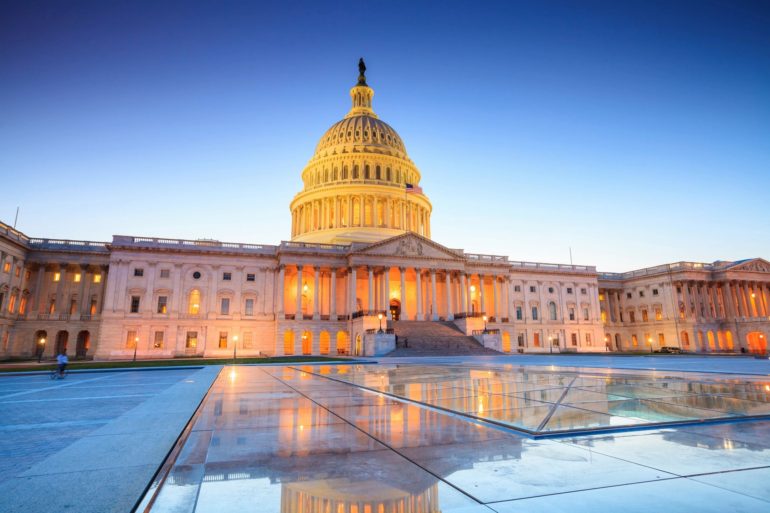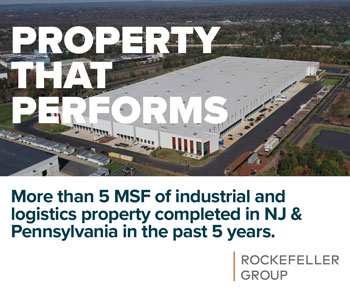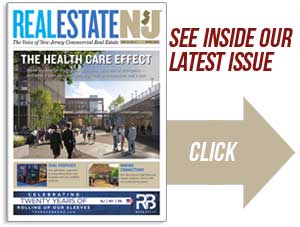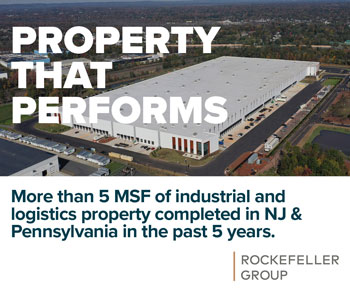By Joshua Burd
When it comes to the federal Opportunity Zone program, the buzz is real.
Just ask Ron Beit, who has spent nearly two decades working in the kinds of distressed neighborhoods that are now primed for investment as a result of the new tax incentive.
“We’ve never had this caliber of investors looking,” said Beit, the CEO and founding partner of RBH Group, the developer behind the acclaimed Teachers Village project in Newark.

But as he noted, shrewd investors “are not just going to invest anywhere … so it’s great that we have that attention now, but it really comes down to the quality of the real estate project.”
That makes it all the more important for the public and private sectors to have the right “ecosystem” in place to not only identify viable Opportunity Zone projects, he said, but to help guide developments and minimize risk in the state’s more challenging neighborhoods.
“We now have the private capital,” Beit said. “We’ve got to manage it and marry it to smart government, whether it be on the state level or the city level. And similarly, the city and the state are going to have to have resources in order to get those intended outcomes.”
Other stakeholders have said as much in recent months amid the rollout of the highly touted new federal program. And as developers and investors ramp up their focus on Opportunity Zone projects, public officials are now trying to balance two key objectives: One is to steer developers to shovel-ready projects that will allow them to maximize the tax benefits of the law, which requires an investment by Dec. 31, 2019 in order to realize the greatest savings.
The other goal? Drive capital to low-income areas that weren’t already attracting investment and may have higher barriers to entry — which could pose a challenge for investors who are conscious of the deadline and of their returns.
State officials feel they can check both boxes with the right coordination and by layering in the subsidies that have helped revitalize many of New Jersey’s cities and downtowns. And they believe the robust demand created by the Opportunity Zone program will allow them to do so.
“We know that there are communities that aren’t ready to go, so there’s a level of effort on the state’s part to get them there,” said Leslie Anderson, executive director of the New Jersey Redevelopment Authority, speaking in late October at a conference hosted by the Rutgers Center for Real Estate.
But she also noted that “we’re going to be there for those ready-to-go cities.”
“The investors can go wherever they want to go,” Anderson said. “But what we want to make sure of is that the investors take a look at our entire state.”

The federal government has approved 169 census tracts in New Jersey that qualify as Opportunity Zones, which span 75 municipalities and are among nearly 9,000 nationwide. Included as part of last year’s federal tax reform bill, the program seeks to drive long-term capital investments to low-income and distressed areas, in part by allowing investors to defer and potentially reduce taxes on capital gains from an unrelated investment.
For instance, investors who redeploy those gains into a qualified Opportunity Zone fund can defer taxes through Dec. 31, 2026. Those taxes can be reduced by as much as 15 percent at that point if they have held the investment for at least seven years, meaning investors must commit their capital by the end of 2019 in order to maximize the benefit.
Investors also have the chance to exclude the gains on all appreciation of the Opportunity Zone fund if they hold the investment for at least 10 years.
Policy experts have estimated there are more than $6 trillion in unrealized capital gains in the U.S., while federal officials believe the zones could attract at least $100 billion in investment. The prospect has pushed developers and investment managers nationwide to raise capital for new Opportunity Zone funds, including many in the Garden State.

“This is a program that benefits people for a very long time,” said Anthony Rinaldi, founder and managing principal of Saxum Real Estate. “And because of those benefits to the investors, I think you’re going to see these other areas attract a lot of investment opportunity.”
Saxum, a Parsippany-based firm, announced in July that it had launched a $100 million fund dedicated to Opportunity Zone projects. The fund has appealed to many experienced and repeat investors, but Rinaldi said it’s also “attracting a great deal of investors who typically did not have a lot of exposure to real estate” — in large part because of the potential returns.
With all things being equal, he said, the firm’s research and underwriting found that Opportunity Zone investments will outperform standard investments on an after-tax basis by upwards of 30 percent, so “it was very clear that there’s a substantial difference.”
At a minimum, that will yield new opportunities in areas that already have strong fundamentals, but may need an additional incentive in certain neighborhoods. Saxum is targeting such opportunities in places like Englewood, New Brunswick, Asbury Park and Red Bank.
“Everyone is always going to focus on downtown Red Bank, but a mile west of that is the Opportunity Zone, so now you’re going to see people focusing there,” Rinaldi said. Developers have also raised concerns about how the program will fare in more challenged cities.

Eugene Diaz, a principal with Prism Capital Partners, said the government’s concept is laudable, but does little “to address why there hasn’t been investment in these communities to begin with,” such as crime, unemployment and a lack of infrastructure.
Unless the government moves to fix those issues, he said, “We’re going to be hard-pressed to try and make sense of an investment and a return in those particular communities” without finding a way to bring additional value to the deal. When combined with the required holding periods under the program, that uncertainty will likely give pause to investors who have other choices.
“You can’t bifurcate this and say it’s solely a tax decision,” Diaz said, speaking Nov. 1 at Sax LLP’s Real Estate Industry Update conference. “It’s not solely a tax decision. It’s an investment decision, and the investment decision is going to hold sway much more than the fact that you owe the government a little tax, especially at a point where capital gains have gone down.”
State officials are taking steps to ensure that investors consider every available zone in New Jersey. Anderson, the NJRA executive director, said several agencies have sought to coordinate their efforts since Gov. Phil Murphy was elected last fall, when they scrambled to identify and recommend 169 census tracts to the federal government.
That approach has continued as the NJRA, the state Housing and Mortgage Finance Agency and the Economic Development Authority have moved to create a website that will be a one-stop shop for Opportunity Zone investors.
“When you go to that site, you’re going to get access to all three of us at one time,” Anderson said, later adding: “We’re all looking at this together at one time, because what we also have is the expertise to help with those timelines that are in the regulation. We can identify what is really a ready-to-go project.”
That will also serve to help investors avoid the pitfalls of home rule in New Jersey, which can delay or derail a project and cause a developer to miss the window within the guidelines.
Anderson also conceded that Newark, Jersey City, New Brunswick and other cities “are going to attract new investment on their own,” but said there are dozens of others that will need a push.
“So we’re also going to play a role in the community engagement strategy to help those cities get ready,” she said. “What none of wants at the end of this, in the state of New Jersey, is that we had this opportunity to access that capital and we missed out on 70 of the 75 cities.”
RELATED: Booker urges ‘savvy investors,’ public officials to partner in Opportunity Zones
Still, even officials in Newark acknowledge the need to steer investment toward the less obvious neighborhoods. Jason Grove, the city’s chief policy advisor, said Newark is focused on providing resources such as a guidebook for projects in the pipeline that don’t have their financing completely in place, providing details that will allow investors to make a decision.
The city is also cataloging shovel-ready projects and ensuring that its employees and other resources are available for Opportunity Zone developers.

“This is part of our larger equitable growth strategy, so whether it be tax abatements, whether it be talking to our folks in code enforcement, we’re letting everybody know that this is something that we want,” said Grove, who also spoke at the Oct. 29 Rutgers conference. “This is something that we want to encourage because we’ve never seen anything like this before. We’ve never had an opportunity to invest millions of dollars in neighborhoods where there’s been a lack of investment for close to 50 years.”
Developers have made it clear that they will favor shovel-ready projects, especially given the need to commit by the end of 2019 in order to capture the greatest benefits. But Rinaldi also pointed to another key Opportunity Zone requirement — the “substantial improvement” clause, which requires a fund to double its investment in the property within 30 months of acquisition.
“All of these projects are going to be heavy value-add or heavy development,” Rinaldi said. “And because of that timeframe, you can’t take a great deal of entitlement risk in the program, so people need sites that are shovel-ready or as of right.
“Typically that’s what they’re going to be first looking for, so municipalities that designate areas in need or redevelopment or rehabilitation are essentially saying, ‘We’re going to work with the developer on what’s best for the municipality in this area.’”
Public- and private-sector leaders also seemingly agree that “not all Opportunity Zones are created equal,” meaning that many projects will need additional subsidies in order to make financial sense. At the Rutgers conference, Anderson said the state is being proactive in allowing developers to pair the federal program with the state’s existing incentives and financing tools.
For instance, the NJRA is giving priority to Opportunity Zone projects when it awards financing packages. She also noted that the HMFA, which uses a scoring system to evaluate applicants for tax credit programs, is adding a point to its scorecard for such projects.

Saxum’s fund is not focused on areas that will rely heavily on government assistance, Rinaldi said, but he believes that many projects will still require government support to be viable.
“The incentives are going to play a really important part in those extremely challenged areas, because Opportunity Zone investors themselves won’t force projects to pencil,” he said. “But if you layer in incentives, I think it broadens the depth of the program and allows the really challenged markets to see more investment.”
Beit — who relied on a complex, multilayered capital stack to complete the $150 million Teachers Village project in Newark — said public-private partnerships will be critical. That’s especially true when you consider that Opportunity Zones are at least a 10-year program.
“When we think about the 15 percent discount on the capital gains that you might get in seven years, depending on where you are in the horizon, that’s not enough to move that investor,” Beit said. “It really does become the tail wagging the dog in terms of that tax investment. And then it really does become having a fundamentally sound real estate project in these distressed census tracts.
“That being said, the biggest benefit of this program is we have investors that have never looked in these neighborhoods looking, so it’s up to us to figure out how to get that capital in.”











